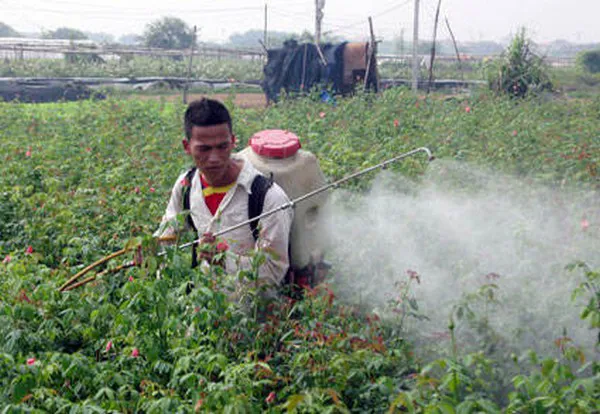A study by the Netherlands Embassy in Hanoi on the current situation of fertilizers and agrochemicals use in Vietnam and the potential market opportunities for the Dutch businesses.
Vietnam is an agricultural nation with a natural area of 33.1 million ha in the mainland, ranking the largest 65th in the world. Agricultural land in Vietnam is 27.3 million ha, of which 42.2% is for agricultural production land, 54.7% is for forestry land and ~3% is water surface area for aquaculture. Agricultural production land is, however, fragmented by small pieces of which almost 70% are less than 0.5ha and 25% are from 0.5-2ha.
The average 2.84% growth rate of agriculture and average 14.5% contribution to GDP in the past 3 years (2018-2020) was done by the labor force of 25% of total labor in Vietnam (www.chinhphu.vn 2021) taking into account the fact that the labor force of Vietnam accounts for 49.5% of the country’s population.

©Hanoimoi
Vietnam is divided into 7 agricultural ecological areas from the north to the south. Each ecological area has its own advantages and focuses on certain key commodities like aquaculture, fruits, vegetables, flowers, livestock or industrial crops. Crop production is spreading along the country at a different scale from region to region. There it comes together with the demand for fertilizers and plant protection chemicals.
Over the past 3 years, the number of mineral and organic fertilizers registered has increased tremendously at >500% for organic fertilizer and ~ 50% for mineral fertilizer while the use of plant protection chemicals is in a downtrend, as presented in a conference by the Ministry of Agriculture and Rural Development of Viet Nam late August 2021. The average use in the Mekong River Delta is found higher than the average in the whole country.
Research by An Giang University showed that there is a parallel development of rice production in Vietnam and the use of active ingredients and trade names of pesticides in the last 30 years. This is also shown by the increasing cost of agrochemicals in rice production. Out of 48.9% of the agrochemical cost in the total rice production cost, around 40% is spent on pesticides and 56% is on fertilizers. For a list of active ingredients allowed in Vietnam, click here.
Shifts in consumer and market demand for safe produce
Vietnam is an open and export-oriented economy. Consumer demands, consumption trends, and requirements in importing countries are important factors that steer the development in Vietnam, speed up the process of awareness and practices by farmers. Moreover, the growth of the middle income and their accelerating spending has led to higher requirements for products (healthy diet, of high quality, organic) but also more responsible awareness about the environment. People generally care more about the environment and the planet they live in when seeing the consequences of climate change, pollutions, and biodiversity loss. This has put the reduction of agrochemical use high on the national and global agenda and gradually turned into practices by governments, businesses and farmers. These have served as key driving factors for changes.
State management
The state management of agrochemicals in Vietnam has been improved in the last few years. However, challenges remain at different levels: state management, businesses, and farmers' uses. According to the list published by MARD, there are 503 mono active ingredients that are grouped into pesticides (133 active ingredients), fungicides with 157 active ingredients, and herbicides with 85 active ingredients. A real challenge for state management is the monitoring of cocktailing these mono-ingredients into active groups.
Read the complete research at www.agroberichtenbuitenland.nl.
